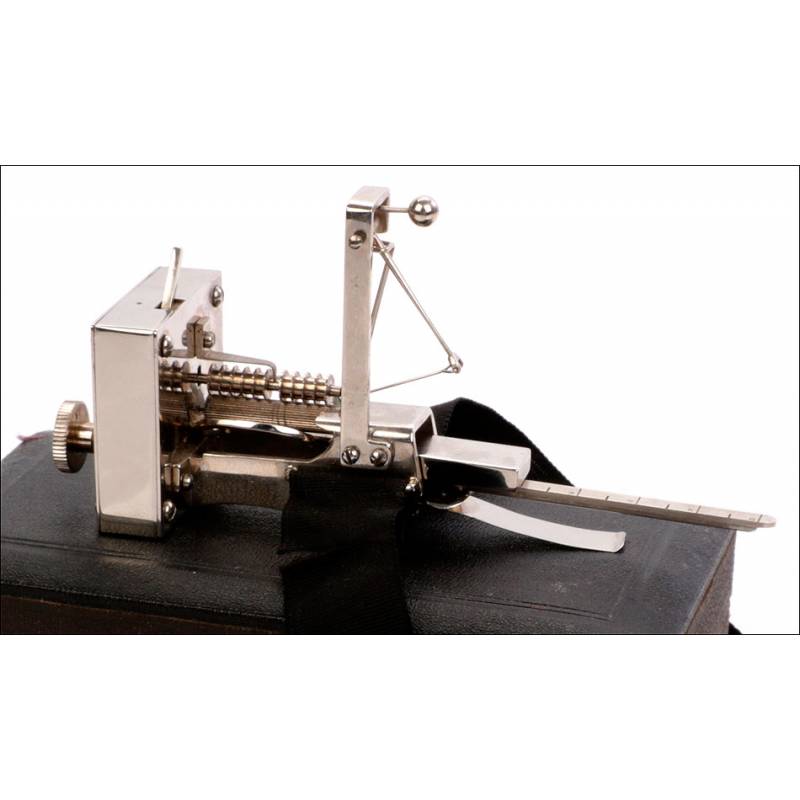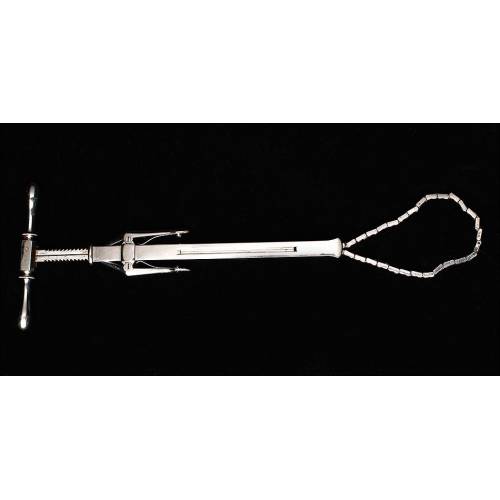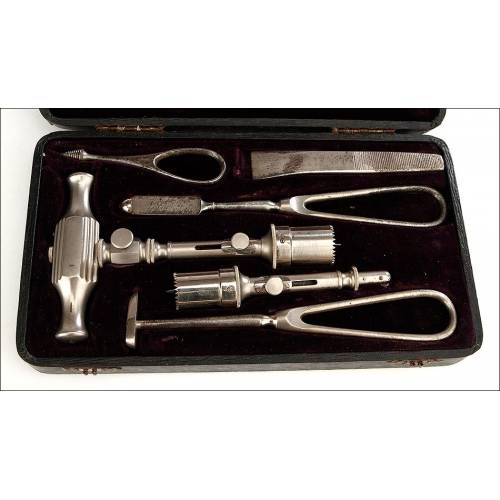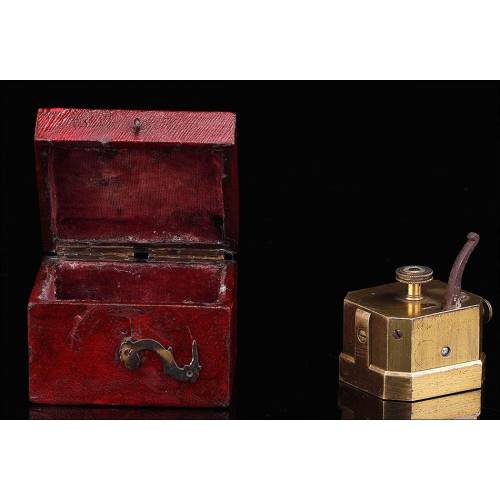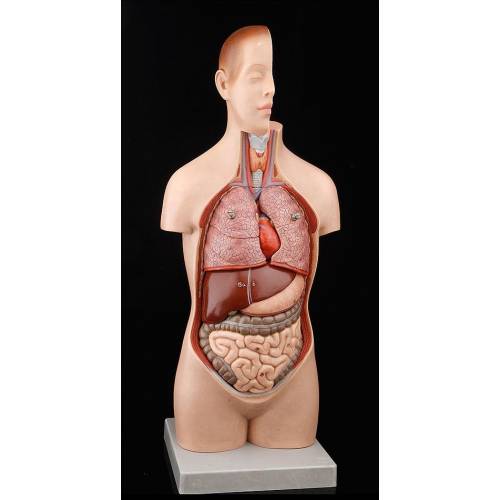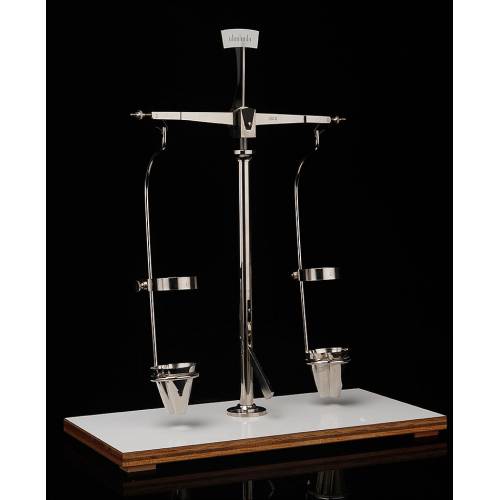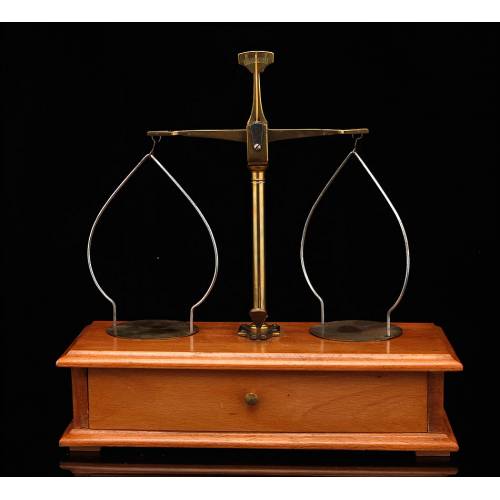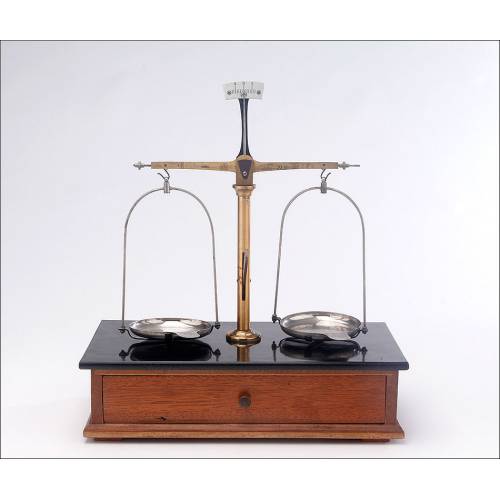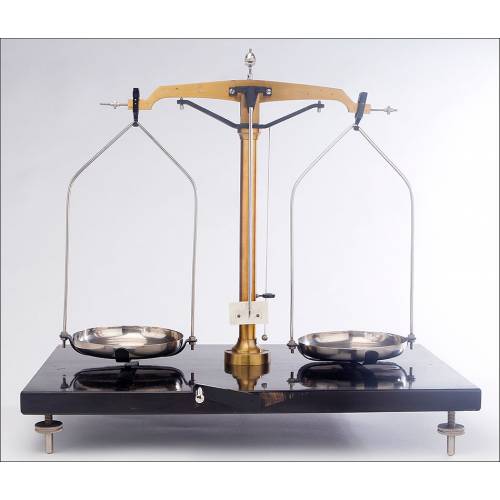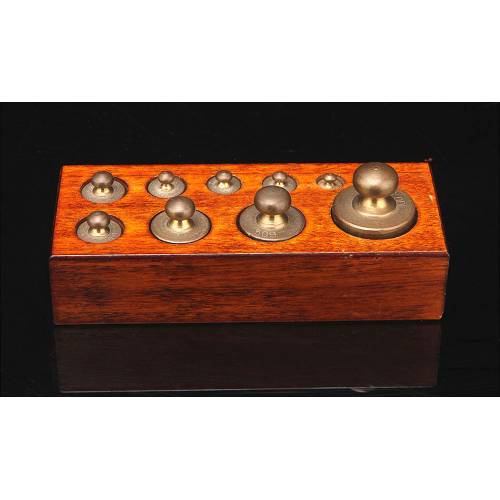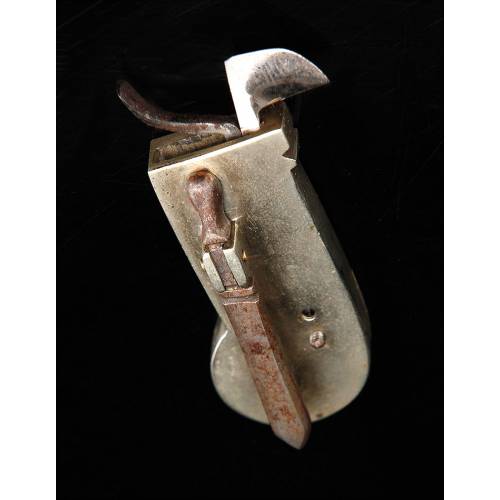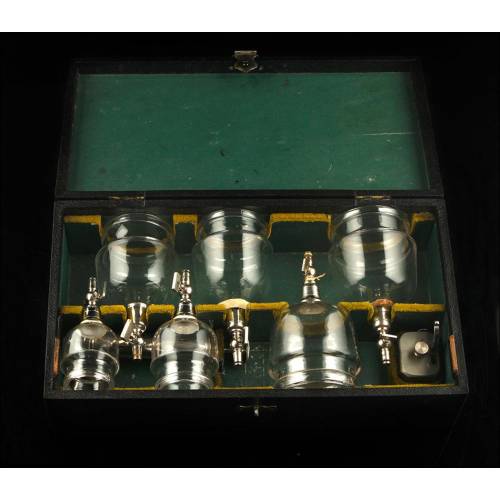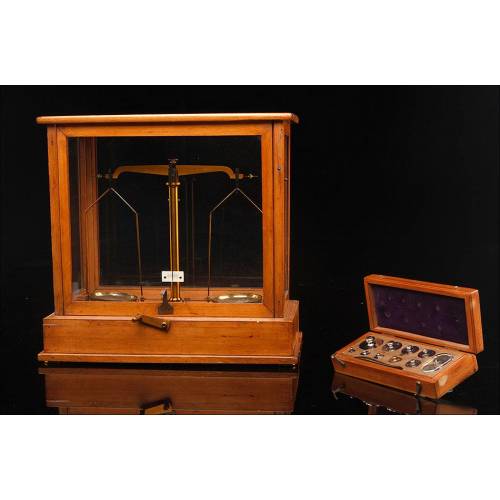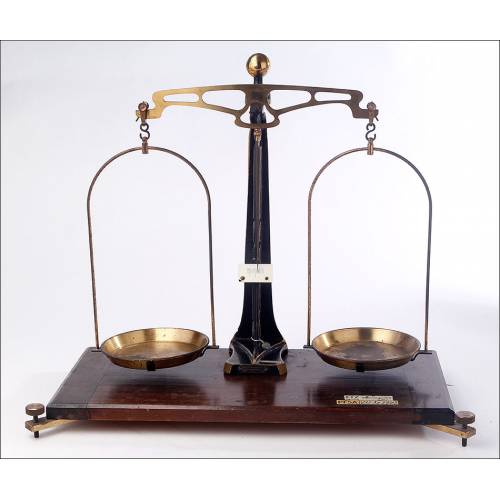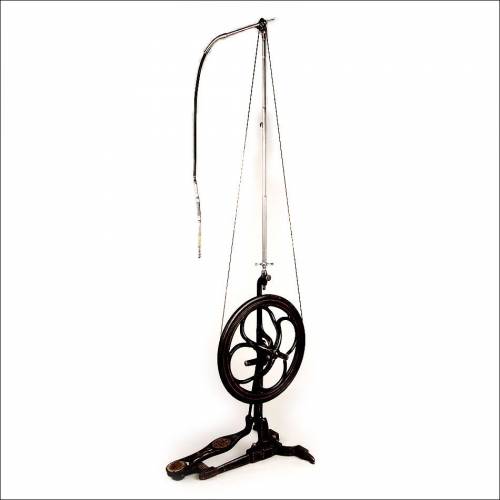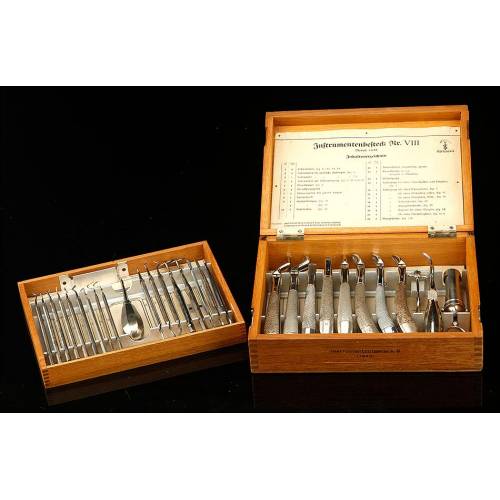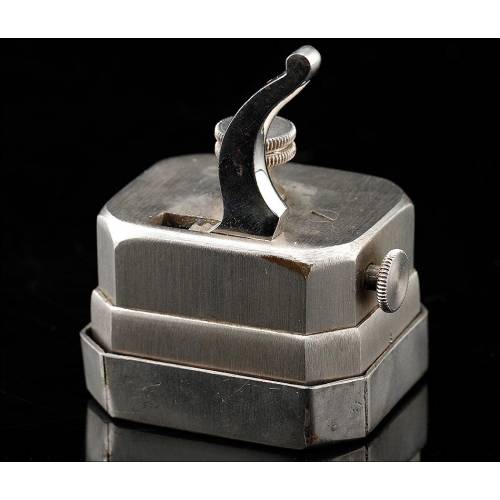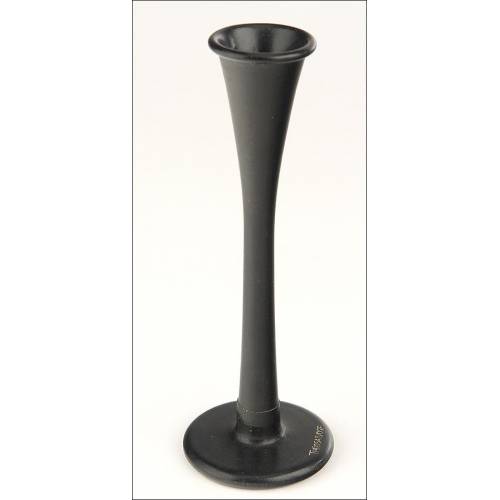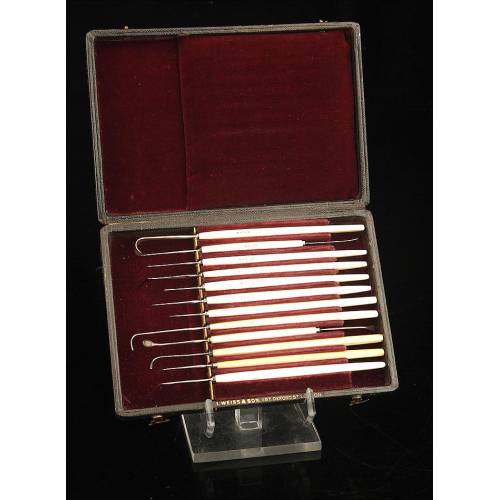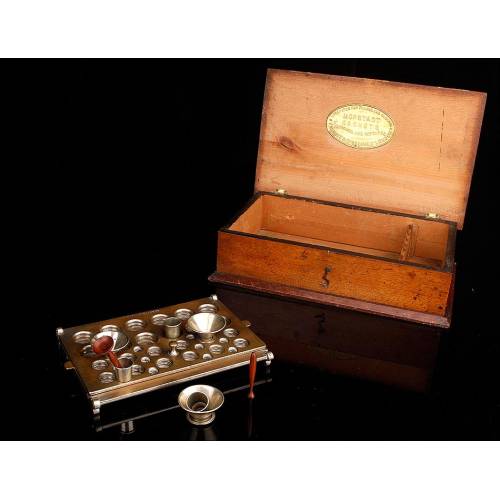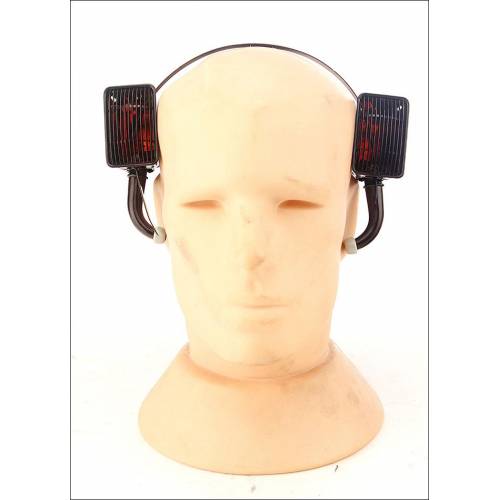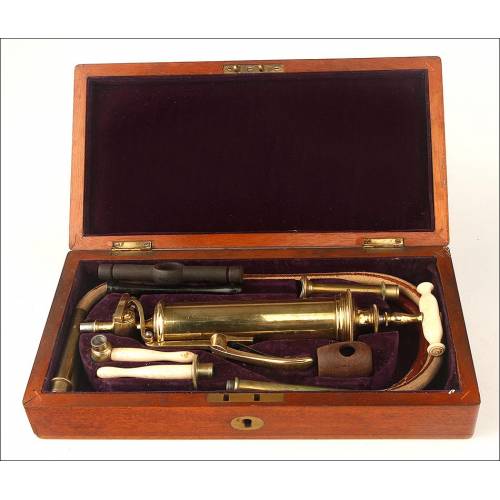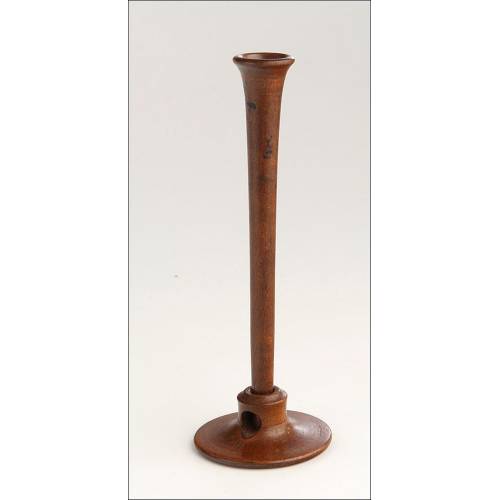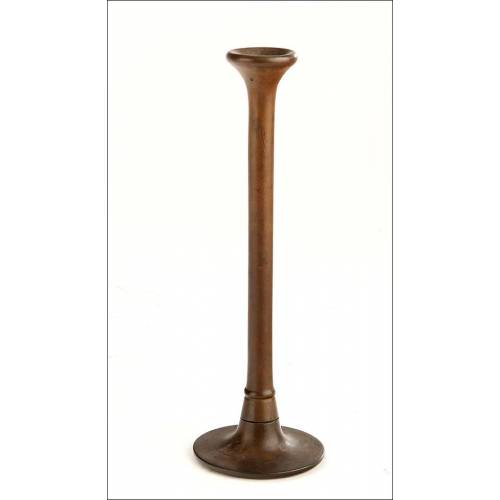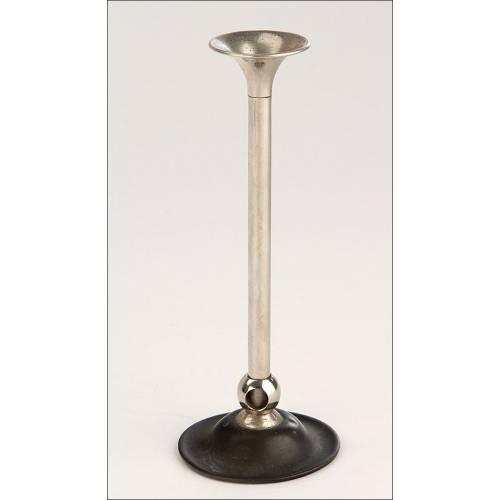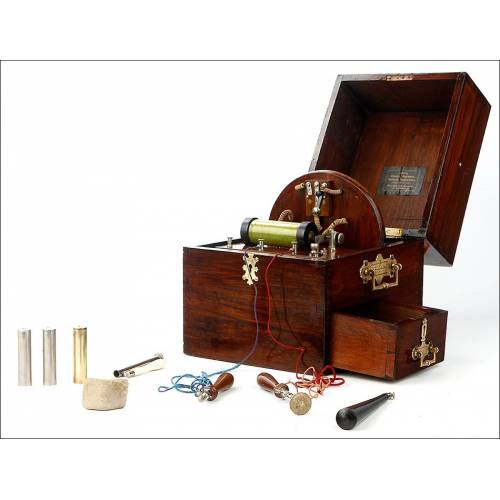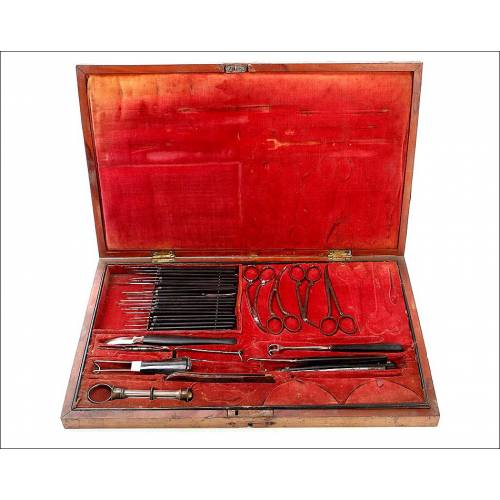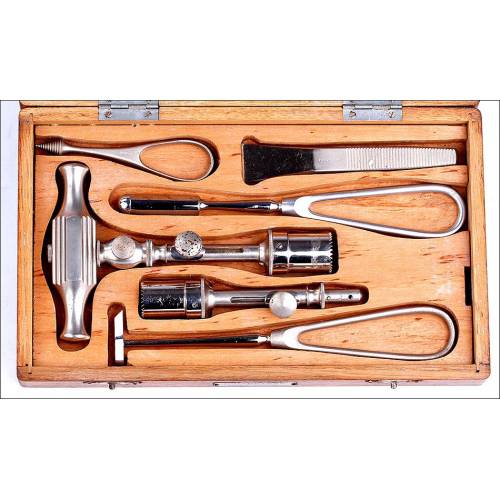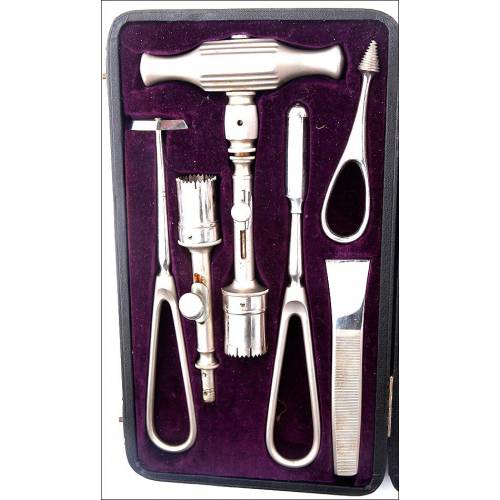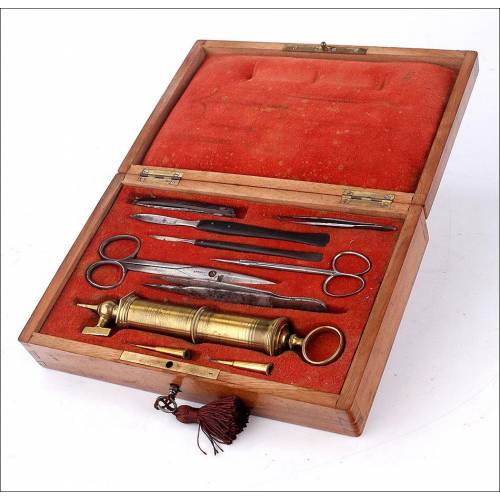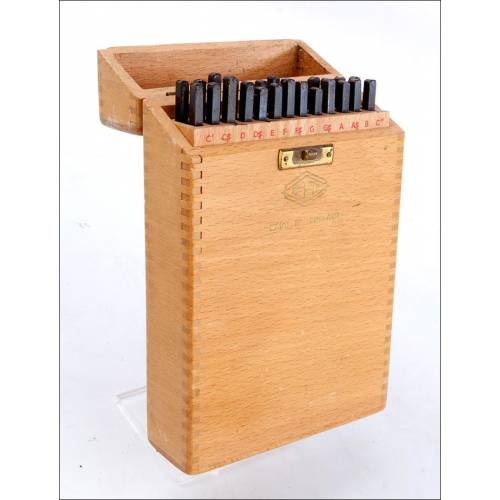C-339
Antique Dudgeon Wrist Sphygmograph. England, Circa 1890
Fascinating Dudgeon wrist sphygmograph in superb condition. In perfect working order. Complete and flawless.
Sold!
This curious and fascinating device is a Dudgeons Wrist Sphygmograph, an antique device designed to record the patients pulse changes on paper. The item that we can see in the images is in almost mint condition: it preserves all the original component parts and pieces and comes in its antique storing case. This device was made in England and is dated in the late 19th century (circa 1890). It is made of silvery-metal except for the band designed to attach the mechanism to the patients wrist. The chrome-plated metal parts remain in great condition with no signs of rust or worn parts. The big square-shaped piece bears the inscription J. & S. Co. LONDON clearly engraved in the metal surface; this was the manufacturers name which was located in London. This square piece contains the clockwork that makes it work. The clockwork is in perfect condition and works very well. The storing case is outside covered by black leather and inside bears a lovely bright red satin lining. Both materials are in great condition, and so is the metal clip fastener.This device is described in Keith Wilbur's book, Antique Medical Instruments. See attached photosWith a remarkable scientific and historic interest, this antique Dudgeons wrist sphygmograph surely witnessed the medical advances that took place in the late 19th century.Sphygmograph History A sphygmograph is a device that registers on paper any change in the patients blood pressure. It is thought to have been invented by the German scientist Karl von Vierordt who designed a non-invasive device which had to be put on the patients wrist so it could measure the blood pressure without introducing tubes or needles in the artery. In 1857, Etienee-Louis Marey turned Vierordts sphygmograph into a portable device. The mechanism mounted a lever whose end would rest on the inner side of the patients wrist; the other end was equipped with a needle that would record the undulations on smoked paper. The device included a clockwork mechanism that made it move at a uniform rate. In 1888, Robert E. Dungeon turned Mareys uncomfortable sphygmograph into a smaller and more functional device that provided more precise and stable recordings.

